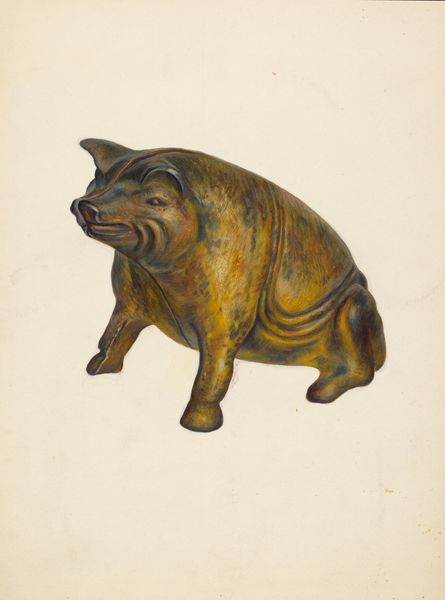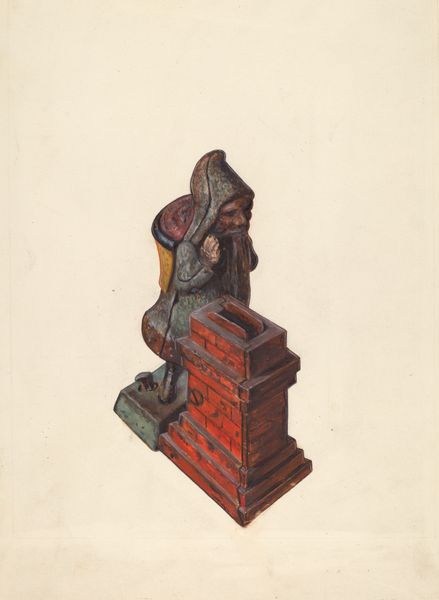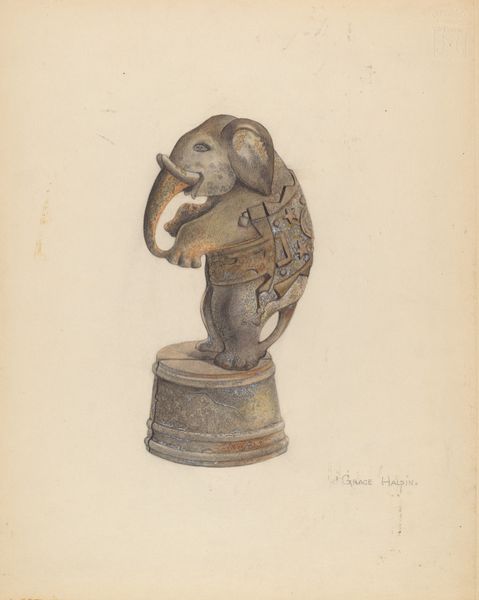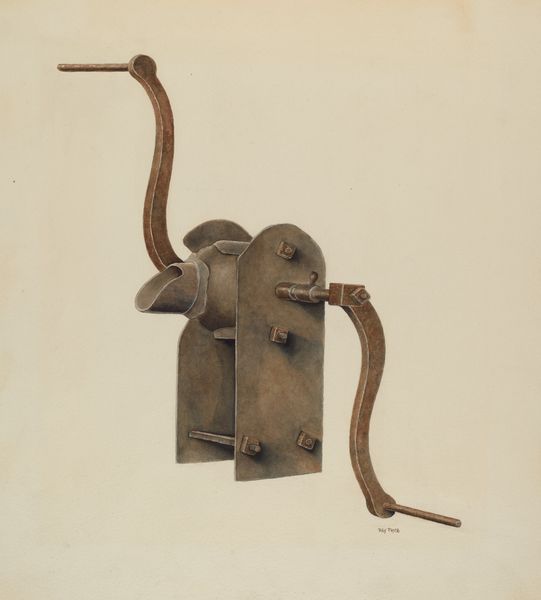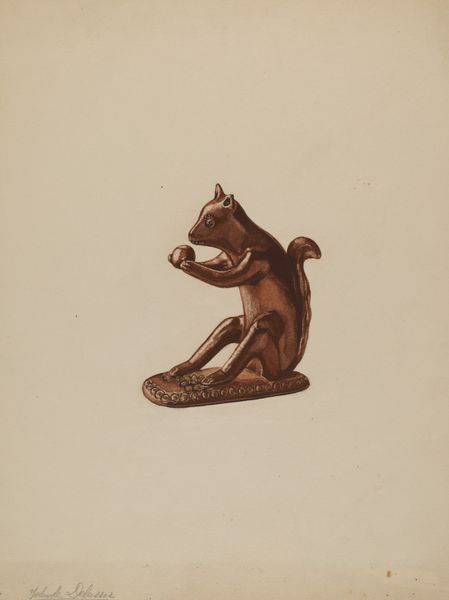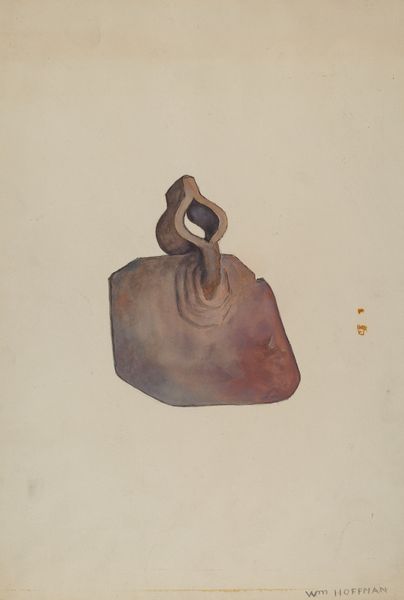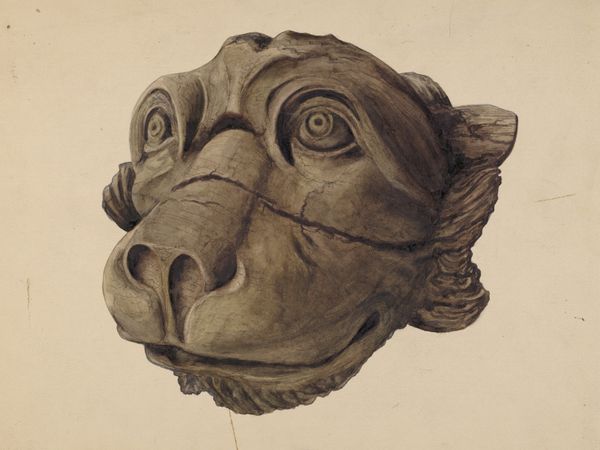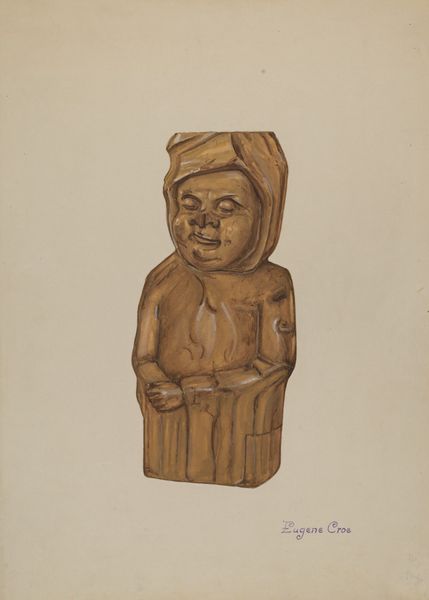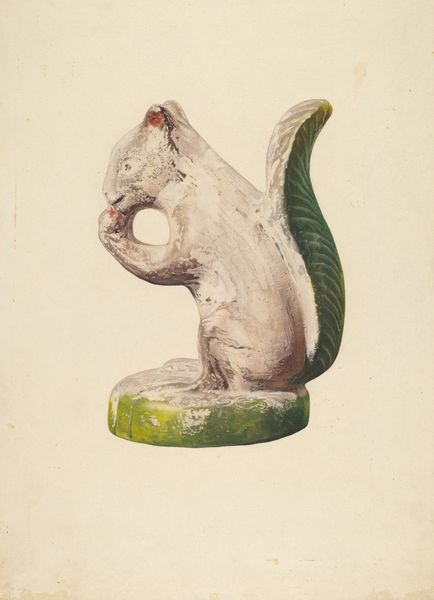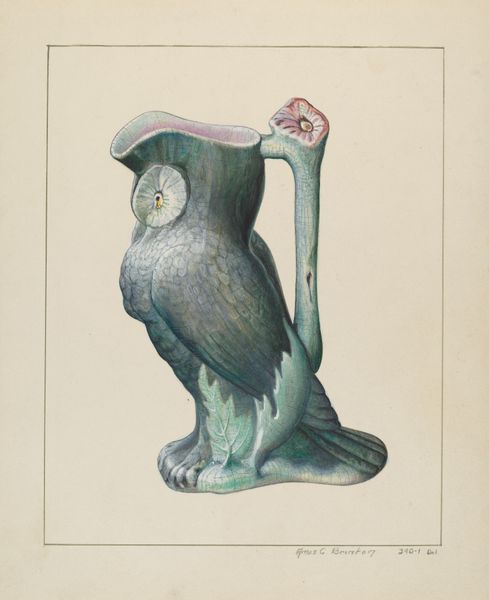
drawing, bronze, sculpture
#
drawing
#
bronze
#
figuration
#
geometric
#
sculpture
Dimensions: overall: 30 x 22.3 cm (11 13/16 x 8 3/4 in.) Original IAD Object: 4 1/2" high
Copyright: National Gallery of Art: CC0 1.0
Curator: Looking at this image, I’m immediately struck by how the elephant appears almost melancholy, its posture so strikingly human. Editor: Indeed. The work before us, attributed to Walter Hochstrasser from around 1939, is entitled "Toy Bank: Elephant". We know that its medium encompasses bronze and drawing, alongside its sculptural nature. It embodies figuration through a fascinating use of geometric forms. Curator: Knowing its a bank speaks volumes about its social role at the time. The intersection of childhood innocence, the commodification of animals, and even the economic anxieties of the late '30s all converge here. Was this simply a harmless toy, or something subtly more charged? Editor: Structurally, there’s a fascinating tension. Note how the soft curves of the elephant’s body contrast against the blocky, geometric base. The sculptor is playing with form. I read a kind of forced compliance here, a contrast amplified by the patinated bronze itself—almost suggesting constraint, not joy. Curator: And don't you think it reflects colonial power structures of the period? The exoticisation and containment of wildlife in the service of capital, visualized in such an everyday object feels like a potent symbol. Especially since childhood learning and toy production are so powerful in constructing the social narratives. Editor: That's interesting, but let’s not ignore its aesthetic complexity. The eye is expertly drawn; realistic yet subtly stylized. Consider too, how the textures capture depth using subtle chiaroscuro—the interplay of shadow adding dimension beyond simple representation. I would love to examine the formal relationship with Brâncuși in his exploration of pure, reduced forms. Curator: Still, by situating this seemingly innocuous object in its socio-historical context, we begin to uncover layered meanings relating to societal values about money, nature, and potentially, even international politics on the eve of WWII. Editor: Well, by investigating this convergence between function and form, we gain a richer insight into the maker’s artistic sensibility. Curator: Understanding its time, and implications. Both are inseparable to make something like this truly complete.
Comments
No comments
Be the first to comment and join the conversation on the ultimate creative platform.
